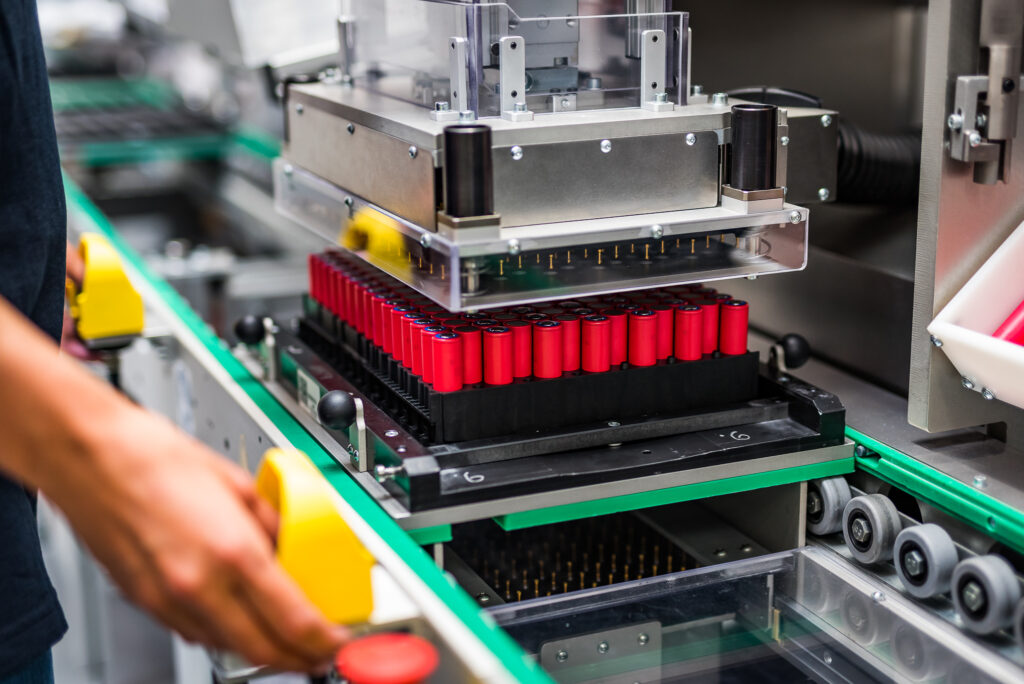Battery Economy & Safety: Li-Ion vs Lead-Acid
4th October 2023

Automated internal logistics platforms, including automated guided vehicles (AGVs), autonomous mobile robots (AMRs), and cleaning machines, are powered by an internal power source. This power source could be a lead-acid or lithium-ion battery. Both offer different performance, but they also have significant differences in terms of economy and safety.
There is no single li-ion battery type. Instead, there are several different chemistry types, each of which significantly impacts key characteristics.
Lithium-ion batteries generally come in three types, divided by their chemistry: NMC (nickel manganese cobalt oxides), NCA (nickel cobalt aluminium oxides), and LFP (iron phosphate).
On the other hand, lead-acid batteries differ in electrolyte carrier and construction. The main types of lead-acid batteries are valve regulated lead-acid (VRLA), absorbent glass mat (AGM), and gel battery (GEL).
Safety Differences Between Li-Ion and Lead-Acid
Li-ion batteries are equipped with a battery management system (BMS). This protects the battery against overvoltage and overcurrent, both of which would otherwise represent a fire hazard.
What’s more, the typical li-ion battery is double protected. The BMS monitors the current in real time, but there is also a fuse or self-control protector (SCP). Both are crucial to the safety of li-ion batteries.
Lead-acid batteries do not have a BMS, meaning that they’re solely protected by the charger. While exceeding the maximum voltage isn’t as dangerous as it would be in a li-ion battery, it can still result in the destruction of the battery. A fuse protects them from short circuits, but overcurrent protection must come from the application. What’s more, lead-acid batteries can release hydrogen while charging, meaning that they should be charged in a specific area where they can be monitored. This is not the case with li-ion batteries.
Cost Differences Between Li-Ion and Lead-Acid
The life cycle of li-ion batteries is typically longer than those of lead-acid batteries. Due to their low durability, lead-acid batteries generally only last around 500 shallow cycles, and even fewer deep cycles.
On the other hand, an LFP battery can easily cope with 2,000 cycles or more. NMC batteries offer fewer cycles, but you should still expect around 1,000 cycles. Also, the BMS in a li-ion battery will be able to monitor battery health and inform the user when a change is required. So, while a li-ion battery might have a higher initial cost, the savings over the lifespan of the batteries makes li-ion the more affordable choice for many.
Li-Ion or Lead-Acid?
Choosing which battery is best for your specific application is usually simple: li-ion batteries win in almost all areas. Li-ion batteries offer exceptional levels of safety, plus they also cost less in the long term – although the initial outlay will be higher. What’s more, li-ion batteries are more convenient, as they require less charging and replacing.
To re-cap main differences between lead-acid and high quality li-ion batteries:

As shown above, in most areas switching to li-ion provides clear advantages without compromising safety, providing high quality batteries are used. To achieve ~24V in typical battery size, two lead-acid batteries must be connected in series. Let’s analyse a simple example looking at products available on the market, comparing a 12V 50Ah lead-acid battery with a Johnson Matthey Battery Systems 21.8V li-ion battery:

Johnson Matthey Battery Systems is a leading producer of lithium-ion batteries for AGVs, AMRs, and cleaning machines. The company provides a range of li-ion options, tailored to the specific needs of the customer, all built in Europe using high-quality components and guaranteed to have exceptional performance. A European manufacturer, with a comprehensive range of services, including testing and validation, all provided under one roof. In-house laboratories allow Johnson Matthey to offer customers advanced and cost-effective testing, along with battery certification.

